With the release of Gnome 3 in 2011, there was quite a mixed reaction from users and developers. Most of them preferred the original Gnome that got forked, and one of those forks was Cinnamon. Since the release of Cinnamon 2.0, Cinnamon has evolved to become a desktop environment by itself.
When most people hear of Cinnamon, the first thing that comes to mind is Linux mint. That is because the same Linux Mint team developed the desktop environment (DE) and is used as flagship DE on Linux Mint. However, Cinnamon is now available across other Linux distributions too.
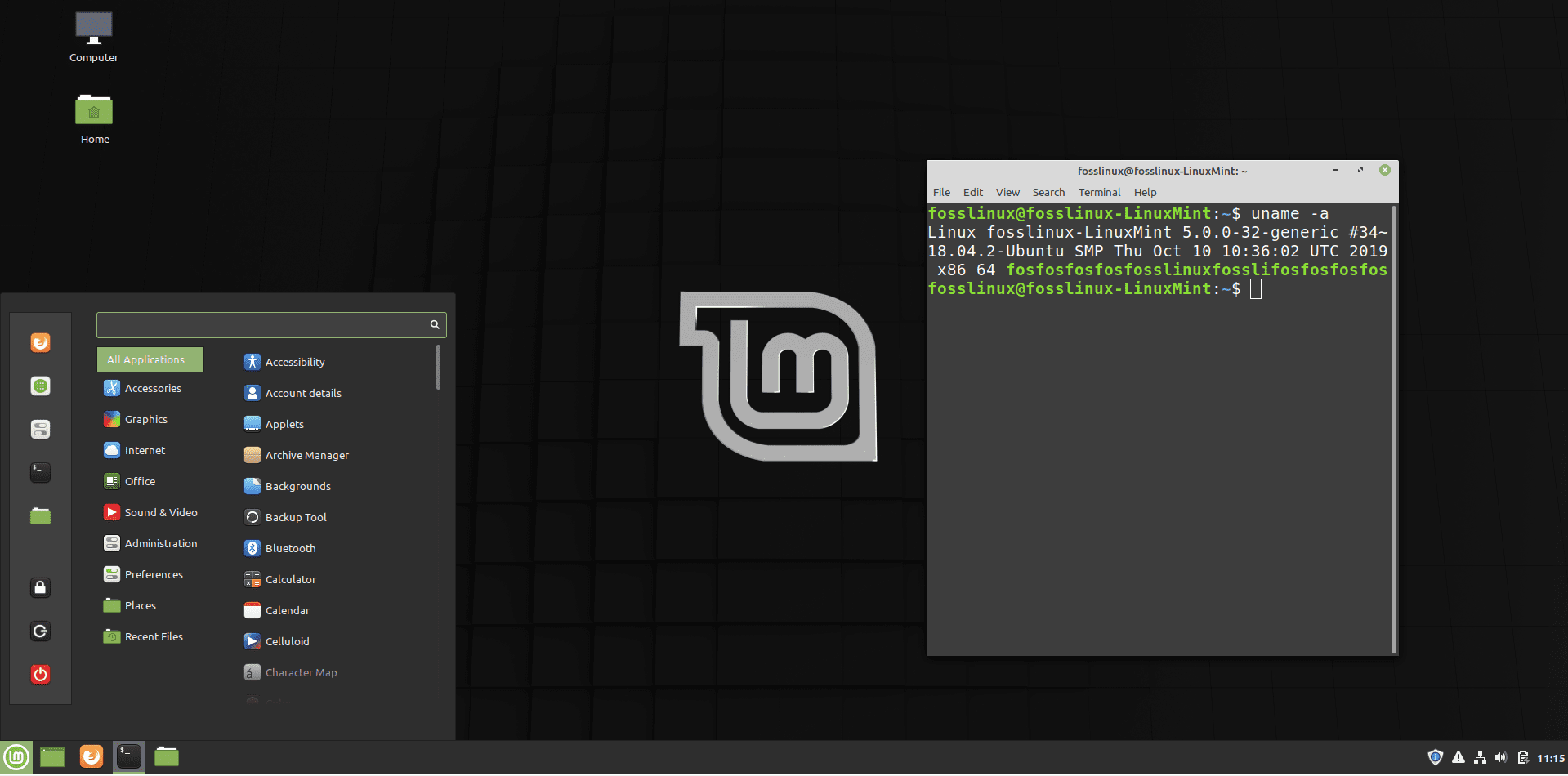
Linux Mint Cinnamon
In this article, we will look at the top reasons why you should use Cinnamon as your Desktop environment. The best way to experience Cinnamon in its purest form is by making a Linux Mint Live USB drive and trying it out. But if you don’t want to do that, you can install Cinnamon in your Ubuntu desktop using the commands below.
sudo apt update sudo add-apt-repository universe sudo apt install cinnamon-desktop-environment
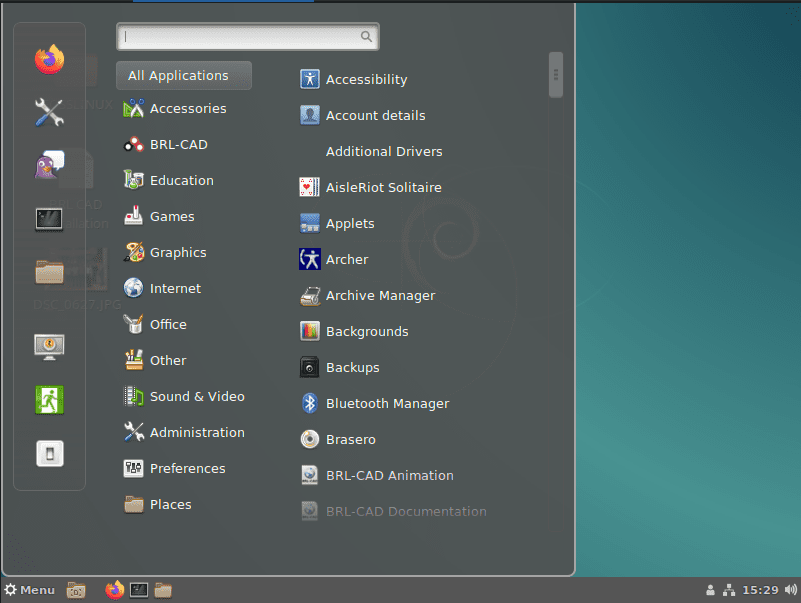
Ubuntu with Cinnamon Desktop Environment
10 Reasons to use the Cinnamon Desktop Environment
1. Amazing GUI
It’s no secret that looks matter in any Linux distribution. We even have users who like a particular distro just because of the beautiful desktop environment, and Cinnamon is one of them. The Cinnamon desktop doesn’t come cluttered with unnecessary icons and shortcuts. You can configure all these using the System Settings then going to the Desktop menu. You can choose whether they should appear on the primary monitor or secondary or all monitors for users with several monitors.
2. Use of Desklets
Have you ever peeped at your friend’s desktop, and you see a clock or any other application, as shown below? Those are what we call desklets—a single-purpose application that you add to your desktop for ease of access. Cinnamon provides several desklets, including a weather app, a desktop photo frame app, and time and date, sticky notes, CPU, or disk monitors, among others. One of my favorites is the Time and Date desklet.
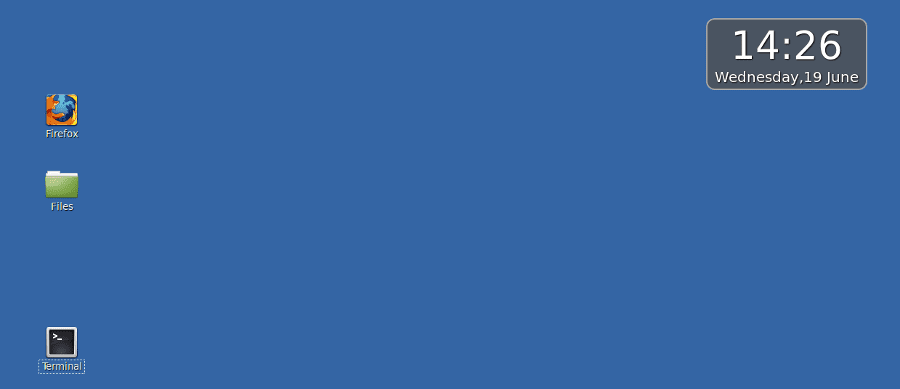
Cinnamon Time Desklet
3. Speed
Since I started using Linux, I have used Cinnamon on Fedora, Debian, and Ubuntu. In all these distros, Cinnamon worked great, and I could launch applications fast and easy. The desktop itself doesn’t take time loading once logged in. Also, Cinnamon is hardware friendly to PCs with fewer resources like Ram. Unless you are running additional applications like Desklets, Cinnamon should run smoothly on your PC.
4. Integration
With Linux desktop environments, you will find that there are specific applications to each of them. For example, say you want to install gnome-screenshot on another environment like KDE, Mate, or Budgie – if the said environment doesn’t support gnome-screenshot required libraries, then it will be impossible to install. Luckily with Cinnamon, things are a lot better due to the strong integration of libraries. You can install most applications regardless of the desktop-environment for which they were written. Cinnamon supports all the libraries for KDE, Gnome, and other Desktop environments I have worked with.
5. Extremely Customizable
Even though not as much as KDE, Cinnamon enables you to customize it well enough to have a beautiful user interface. The control center application gives you access to all Cinnamon desktop configurations. On the main window, you can launch windows on specific feature configurations. You can also change the graphical look of your desktop using the theme options in the system settings. You can customize the window borders, icons, pointers, and even improve your desktop scheme. Additionally, you cal also customize the fonts and the Desktop background.
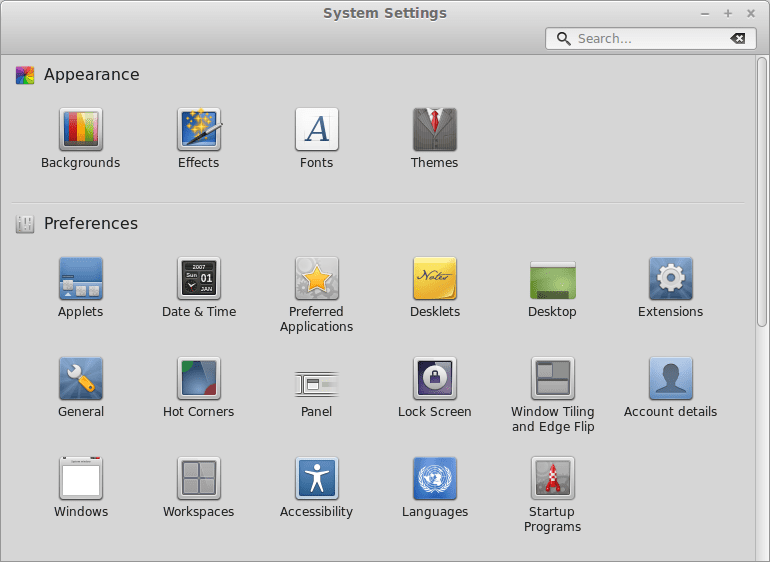
Cinnamon System settings
6. The Cinnamon Panel
The Cinnamon panel or toolbar comes configured very simple. A menu to open commonly used applications, a system tray, and the application selector. However, you can customize the panel to your liking and even add new program launchers. To do this, go to the application menu, right-click on the application ou want, and select “Add to panel.” Additionally, you can add launchers on the Desktop or the “Favorites” bar. Cinnamon also allows you to arrange the program launchers on the panel as you wish via “Edit mode.”

Cinnamon Panel
7. Use of Multiple Workspaces
Like other Linux desktop environments, Cinnamon allows you to use multiple Desktops only that here they are called “workspaces.” You select your workspaces from the Cinnamon panel, which shows the outline of windows present on every workspace. A fantastic feature about Cinnamon on workspaces is that you can move applications between workspaces or assign them to each workspace available.

Cinnamon workspaces
8. Flexibility
The Cinnamon Desktop environment makes it easy to use and navigate through due to high flexibility in the Graphical User Interface. For example, when running several programs at a go, it can be challenging to locate the minimized applications or those running in the background from the toolbar. One of the features you can use to solve this is rearranging the running program buttons on the selector. This way, you can easily click on any running application without much hustle.
Also, the Cinnamon Desktop has a quite useful menu accessible by right-clicking on an empty area giving you access to several features and utilities. They include desklets, create a new document, and more.

Desktop Menu
9. Nemo
Like any other Desktop Environment, Cinnamon comes with its fair share of Default applications. One which caught my eyes was the file manager, Nemo. I have worked much with other file managers like Nautilus and Krusader. With Cinnamon, its when I got exposure to this great application. Nemo comes with a clean user interface, and the feature buttons are well placed. When you also compare using Nemo and Nautilus with Cinnamon, Nemo seems to rhyme very well with Cinnamon compared to Nautilus.
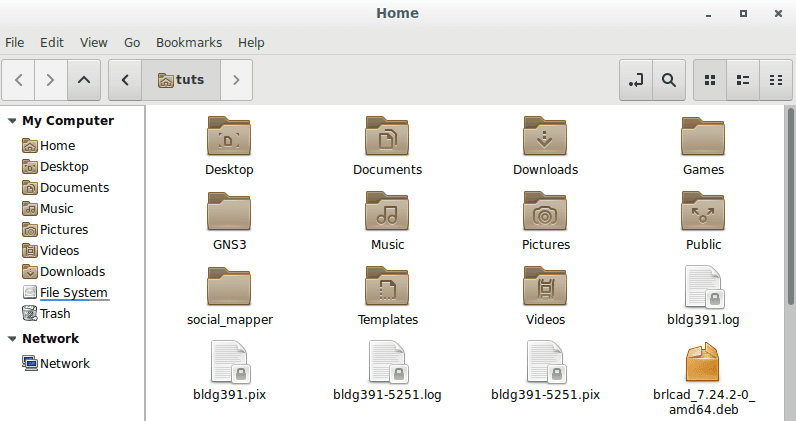
Nemo File manager
10. Stability
Since October 2013, Cinnamon ceased from being a Gnome frontend on top of Gnome and no longer required Gnome for installation. It became a desktop environment with its right. Developers have since then included more and more features, and as of writing this article, the latest release is Cinnamon 3.6.7. Cinnamon is very stable and works great with several Linux distributions.
Conclusion
The Cinnamon Desktop is quite pretty, customizable, and available for several distributions other than Mint like Ubuntu, Debian, OpenSUSE, Arch Linux, and Fedora. As a derivation of Gnome, Cinnamon supports a lot of Gnome software. That is because it supports most libraries required to run these apps. I believe this article has given you the necessary information about the Cinnamon Desktop environment. If you have any additional information, please share it with our readers in the comment section.


4 comments
Great article that causes me to seriously consider trying it out. Thank you and keep them coming.
And the tray icons work .
Gnome3 isn’t actually a “fork” of Gnome2
.. Cinnamon is, for the Elderly, a usable environment which is useful to US OVER 60.
? name just one feature ‘unique to Cinnamon ?
Menu, Accessibility, Mouse Zoom “on”, select , and close the window.
. now go to the web or even a picture,
. . press and scroll the mouse wheel Forward .. Auto Zoom-in/out
Cinnamon is for those who want something in between Gnome (minimalist, less features out of the box) and KDE (‘maximalist’, distracting menus with many elements, innovative but at the cost of bugs you find quite easily). Cinnamon is somewhere in between, more conservative than the aforementioned desktops but not in the sense that it is resistant to sensible changes and progress. People differ and their needs differ. I tried all the desktops apart from LXQT, LXDE and Enlightment, and have found Cinnamon to be perfect for me.